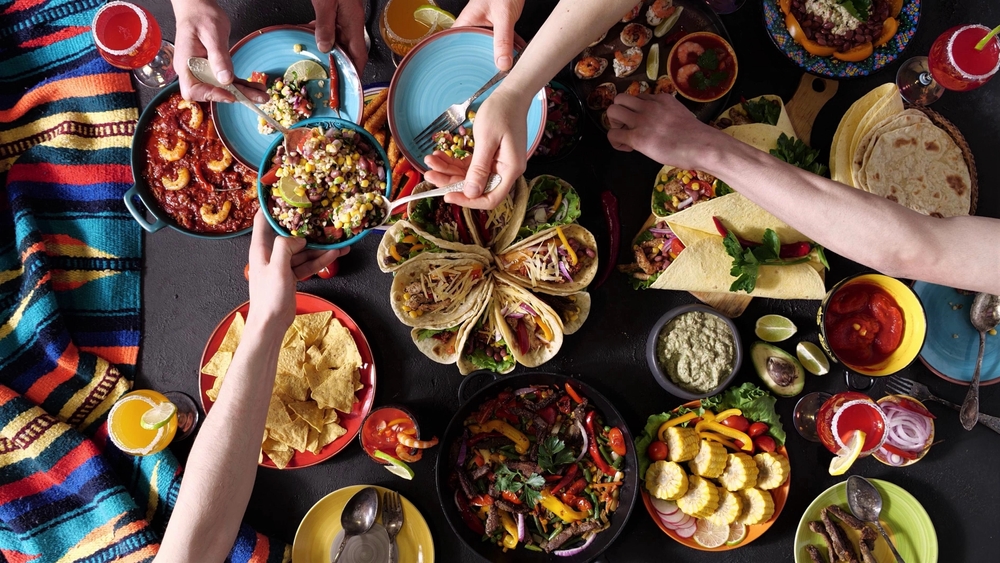In the field of gastronomy, food serves as more than just sustenance; it also serves as a vehicle for cultural narratives, customs, and a window into the diverse range of human experiences. Beyond the plate, different diets around the world have deep cultural significance and weave stories that honor history, identity, and community. This investigation goes beyond simple nutrition to examine the cultural significance of various diets and reveal the distinctive narratives ingrained in various culinary customs throughout the world.
The Mediterranean Diet: A Web of Health and Lifespan
The Mediterranean diet is a way of life rather than just a dietary preference because of its emphasis on fresh fruits, vegetables, olive oil, and lean proteins. This diet, which originated in nations that border the Mediterranean Sea, reflects cultural ideals that place a strong emphasis on community, celebration, and a connection to the land. Meals shared with loved ones and friends strengthen ties and promote a sense of community. The Mediterranean diet epitomizes sustainability and harmonious coexistence with nature, owing to its dependence on seasonal and fresh produce.

Japanese Food: A Harmony of Precision and Tradition
Japanese cooking skillfully combines aesthetics, precision, and a deep regard for ingredients. The careful blending of flavors, textures, and colors in traditional Japanese cuisine reflects the country’s emphasis on harmony and minimalism. Each dish is meticulously prepared, demonstrating the respect for gastronomic customs that have been passed down through the ages. In Japan, dining is a shared experience rather than just a solitary activity, which emphasizes the value of social and familial ties.
Indian Spices: A Flavor and Healing Spice Odyssey
The rich history and varied geography of India are fundamental to the cuisine’s vibrant and aromatic tapestry. Not only do spices like cardamom, cumin, and turmeric add a unique flavor, but they also have cultural significance. Indian diets are frequently based on Ayurvedic principles, which consider food to be both medicine and sustenance. Each region of India has its own distinct culinary identity, and the country’s cultural diversity is reflected in the wide variety of flavors and spices found in its cuisine.
Plant-Based Diets: A Sustainable Cultural Transition
The popularity of plant-based diets is indicative of a shift in society toward ethical and sustainable eating. Living a vegan or vegetarian lifestyle reflects a greater concern for the environment, animal welfare, and human health than just dietary preferences. Around the world, cultures are embracing plant-based substitutes for traditional recipes, demonstrating the adaptability of ingredients and a dedication to lessening environmental impact. The plant-based movement unites people who have similar goals for a more sustainable future, regardless of geographic boundaries.
North African Cuisine: An Exploration of Flavor and Customs
The robust spices and fragrant herbs found in North African food tell a tale of historical influences and cross-cultural interactions. Every dish, from Algeria’s tagines to Morocco’s couscous, bears the imprint of ages-old customs. In North African cultures, eating together strengthens the ties between family and community. The region’s varied history is reflected in the culinary tapestry that is created by fusing native ingredients with those brought in by different conquerors and traders.
Mexican Cuisine: A Celebration of Tradition and Joy
Mexican food is a celebration of culture, history, and community. It is known throughout the world for its vivid colors and flavorful dishes. Due to the cuisine’s indigenous origins, traditional Mexican diets include staples like corn, beans, and chili peppers. In Mexico, eating is a joyful occasion that represents the value of friends, family, and cultural legacy. From tacos to mole, every dish tells a story of centuries-old cooking customs.

Conclusion
Beyond the plate, there is a world full of cultural narratives, and diets are about more than just the food we eat—they are also about the stories those foods tell. Every diet creates a different tapestry; these include the plant-based, health-conscious Mediterranean diet, the Japanese cuisine’s precision, the Indian cuisine’s spice odyssey, the North African and Mexican cuisines’ shared traditions, and the sustainability of their choices.
We develop a greater understanding of the relationship between food, tradition, and identity as we investigate different diets and their cultural significance. A global culinary tapestry that crosses boundaries and brings people together through the shared joy of breaking bread together can be fostered by embracing the diversity of global diets and celebrating the richness of human experiences. This symphony of flavours and traditions, we find not only nourishment for the body but also a feast for the soul.



